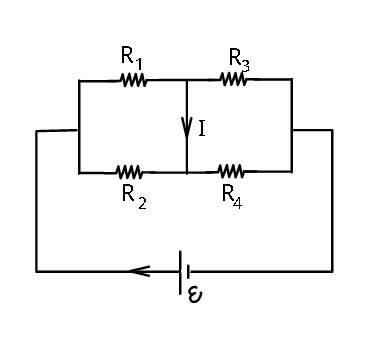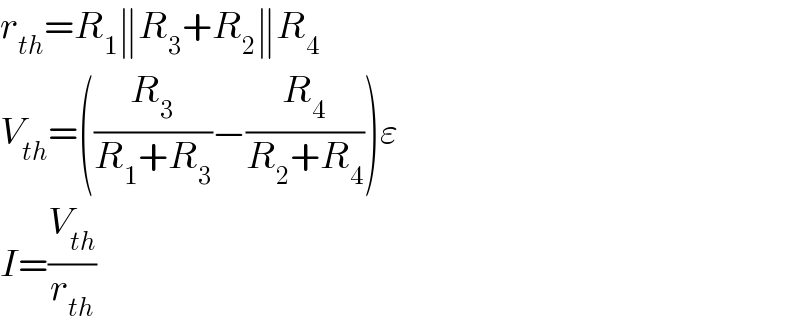
Question and Answers Forum
Previous in Electric Current and Circuits Next in Electric Current and Circuits
Question Number 34617 by ajfour last updated on 09/May/18

Commented by candre last updated on 09/May/18

Commented by ajfour last updated on 09/May/18

Answered by ajfour last updated on 09/May/18
![I=i_1 −i_3 i =(ε/((((R_1 R_2 )/(R_1 +R_2 ))+((R_3 R_4 )/(R_3 +R_4 ))))) i_1 =i((R_2 /(R_1 +R_2 ))) ; i_3 =i((R_4 /(R_3 +R_4 ))) I=(ε/((((R_1 R_2 )/(R_1 +R_2 ))+((R_3 R_4 )/(R_3 +R_4 )))))[(R_2 /(R_1 +R_2 ))−(R_4 /(R_3 +R_4 ))] I= ((ε(R_2 R_3 −R_1 R_4 ))/(R_1 R_2 (R_3 +R_4 )+R_3 R_4 (R_1 +R_2 ))) .](Q34624.png)
Answered by tanmay.chaudhury50@gmail.com last updated on 09/May/18

